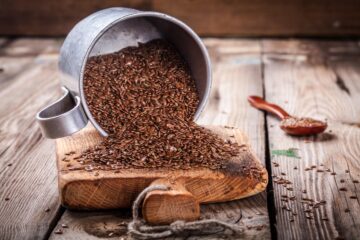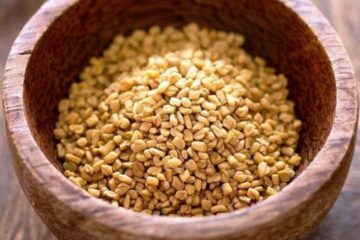Name:
Commonly known as Echinacea, this herb belongs to the genus Echinacea in the family Asteraceae. There are several species within this genus, but the three most commonly used in medicinal applications are Echinacea purpurea, Echinacea angustifolia, and Echinacea pallida.
Description:
Echinacea plants are perennial herbs that typically reach 1 to 2 feet in height. They are characterized by their large, daisy-like flowers with a central cone (hence the common name “cone-flower”). The flowers are usually purple, but some species may have pink or white flowers. The leaves are lance-shaped and alternate on the stem. The plant is also noted for its thick, black taproot.
Medicinal Uses:
- Immune System Support: Echinacea is best known for its potential role in boosting the immune system. It is often used to prevent or treat common colds. Clinical trials have provided mixed results; some suggest a potential benefit in reducing the duration and severity of cold symptoms, while others find no significant effect. A systematic review from the University of Connecticut combined the results of multiple studies and suggested a possible benefit, particularly for preventing colds (https://pubmed.ncbi.nlm.nih.gov/17597571/). Nevertheless, the National Center for Complementary and Integrative Health (NCCIH) emphasizes that results are mixed and more research is needed (https://www.nccih.nih.gov/health/echinacea).
- Anti-Inflammatory Effects: Laboratory studies have shown that Echinacea can produce anti-inflammatory effects, possibly due to compounds such as alkamides. These findings have prompted interest in Echinacea as a potential treatment for conditions related to inflammation, such as rheumatoid arthritis. However, these effects have not been reliably demonstrated in clinical trials with human subjects. Further research is needed to evaluate this potential use (https://www.ncbi.nlm.nih.gov/pmc/articles/PMC4441164/).
- Wound Healing and Skin Health: Some research suggests that Echinacea could be beneficial for skin health and wound healing due to its antimicrobial and anti-inflammatory properties. Both oral and topical forms of Echinacea have been used for this purpose. However, evidence from well-designed clinical trials is limited and further research is needed to confirm these potential benefits (https://pubmed.ncbi.nlm.nih.gov/23030504/).
- Potential Antiviral Properties: Echinacea has been studied for potential antiviral properties, including against influenza (flu) and herpes simplex viruses. Lab studies have shown that some Echinacea extracts might inhibit these viruses in vitro. A clinical trial conducted by Cardiff University showed that Echinacea extract taken in conjunction with a specific antiviral medication reduced the recurrence of herpes simplex outbreaks (https://pubmed.ncbi.nlm.nih.gov/15080016/). However, the antiviral effects of Echinacea alone are still not well understood and require further investigation.
- Possible Anti-cancer Effects: Some laboratory studies suggest that Echinacea might have anti-cancer properties, likely due to its immune-stimulatory effects. For instance, a study published in “Journal of Ethnopharmacology” found that Echinacea purpurea extract could induce cell death in human pancreatic cancer cells (https://www.sciencedirect.com/science/article/abs/pii/S0378874112008777). However, these findings are preliminary, and it is important to note that results in cells or animals do not always translate to humans. Therefore, Echinacea’s potential role in cancer treatment needs further clinical investigation.
- Respiratory Infections: Some people use Echinacea to help with respiratory tract infections. There’s some evidence suggesting that Echinacea might have modest benefits for treating upper respiratory infections, such as the common cold or flu. A meta-analysis of 14 studies found that taking Echinacea may lower the risk of developing a cold by 10% to 20%, though results varied based on the Echinacea product used (https://www.cambridge.org/core/journals/public-health-nutrition/article/echinacea-purpurea-supplementation-stimulates-select-groups-of-human-gut-microbiota/G0C9E2F9FB1A0E64D631DE37F95B76D5). However, the evidence isn’t strong enough to make clear recommendations, and more research is needed.
Origin and Distribution:
Originally, Echinacea was native to North America, particularly in the regions of the United States east of the Rocky Mountains. Today, it is cultivated worldwide, especially in Europe and North America, for its medicinal and ornamental value.
Cultivation and Care:
Culinary Uses: Echinacea is not typically used in culinary applications.
Medicinal Uses: Echinacea has been used for centuries in traditional medicine, particularly by Native American tribes. Modern scientific research suggests that Echinacea may boost the immune system and has anti-inflammatory, antioxidant, and antiviral properties. However, these effects are generally modest and more research is needed to confirm these benefits (National Center for Complementary and Integrative Health, https://www.nccih.nih.gov/health/echinacea).
Other Uses: Echinacea is often used in cosmetic products for its purported skin-soothing properties.
Harvesting and Storage:
The best time to harvest Echinacea is in late summer when the plants are in full bloom. The roots, leaves, and flowers are all used in medicinal preparations. After harvesting, the plant parts can be dried and stored in a cool, dark place for later use.
Uses:
Culinary Uses: Echinacea is not typically used in culinary applications.
Medicinal Uses: Echinacea has been used for centuries in traditional medicine, particularly by Native American tribes. Modern scientific research suggests that Echinacea may boost the immune system and has anti-inflammatory, antioxidant, and antiviral properties. However, these effects are generally modest and more research is needed to confirm these benefits (National Center for Complementary and Integrative Health, https://www.nccih.nih.gov/health/echinacea).
Other Uses: Echinacea is often used in cosmetic products for its purported skin-soothing properties.
Safety Information:
While generally safe for most people, Echinacea can cause side effects like nausea, stomach pain, or allergic reactions in some individuals. It may also interact with certain medications, so it’s important to consult with a healthcare provider before starting any new herbal supplement (Mayo Clinic, https://www.mayoclinic.org/drugs-supplements-echinacea/art-20364141).
Historical and Cultural Significance:
Echinacea holds a significant place in the traditional medicine of many Native American tribes, used for a range of ailments from coughs and colds to wound healing. In the mid-20th century, it gained popularity in Western countries as a natural remedy for colds and flu.
Conservation Status:
As a widely cultivated plant, Echinacea is not currently at risk of extinction. However, wild populations may face pressure due to overharvesting and habitat loss.




